Erin Fletcher : Fine Binding & Edition Binding
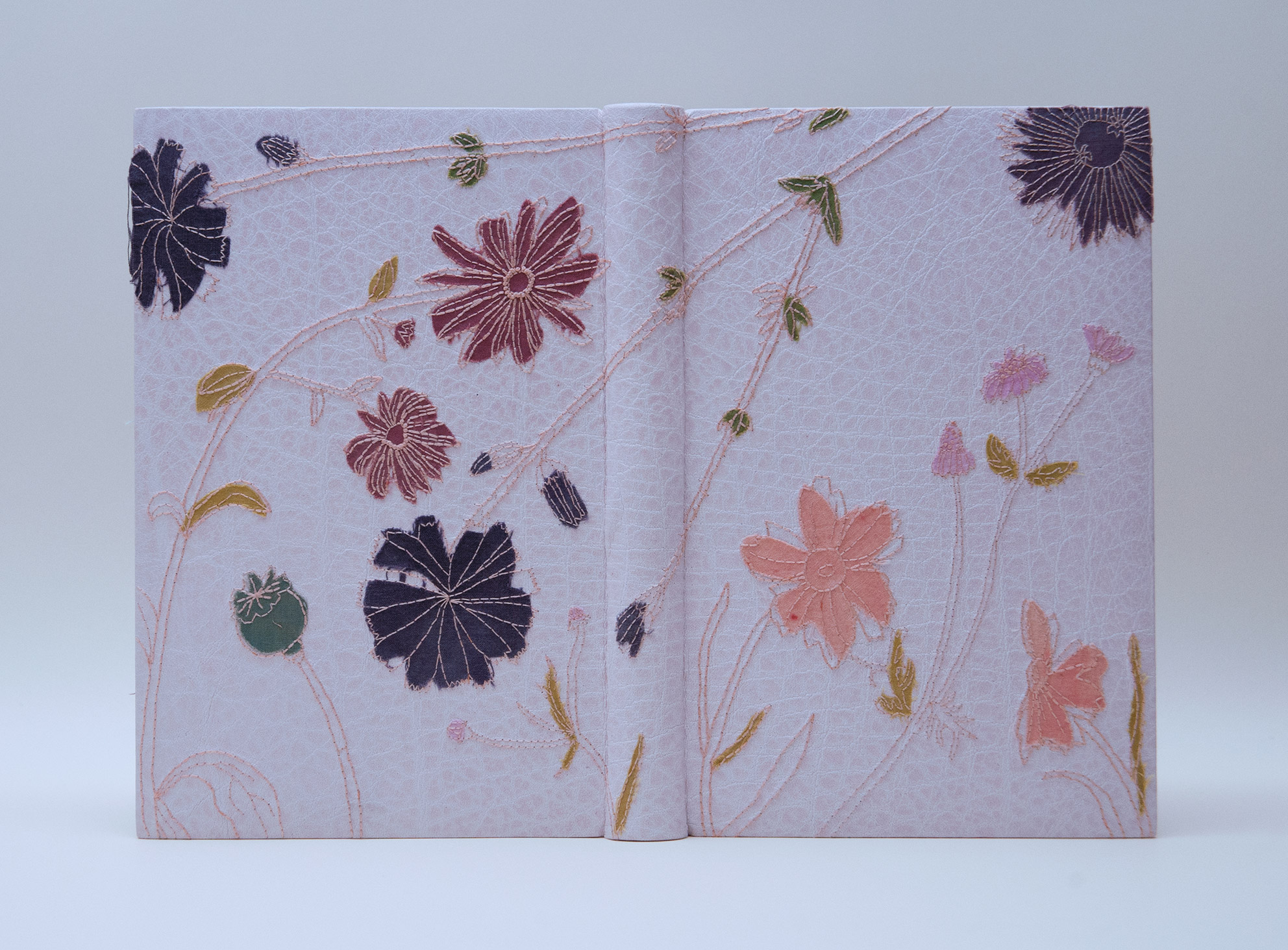
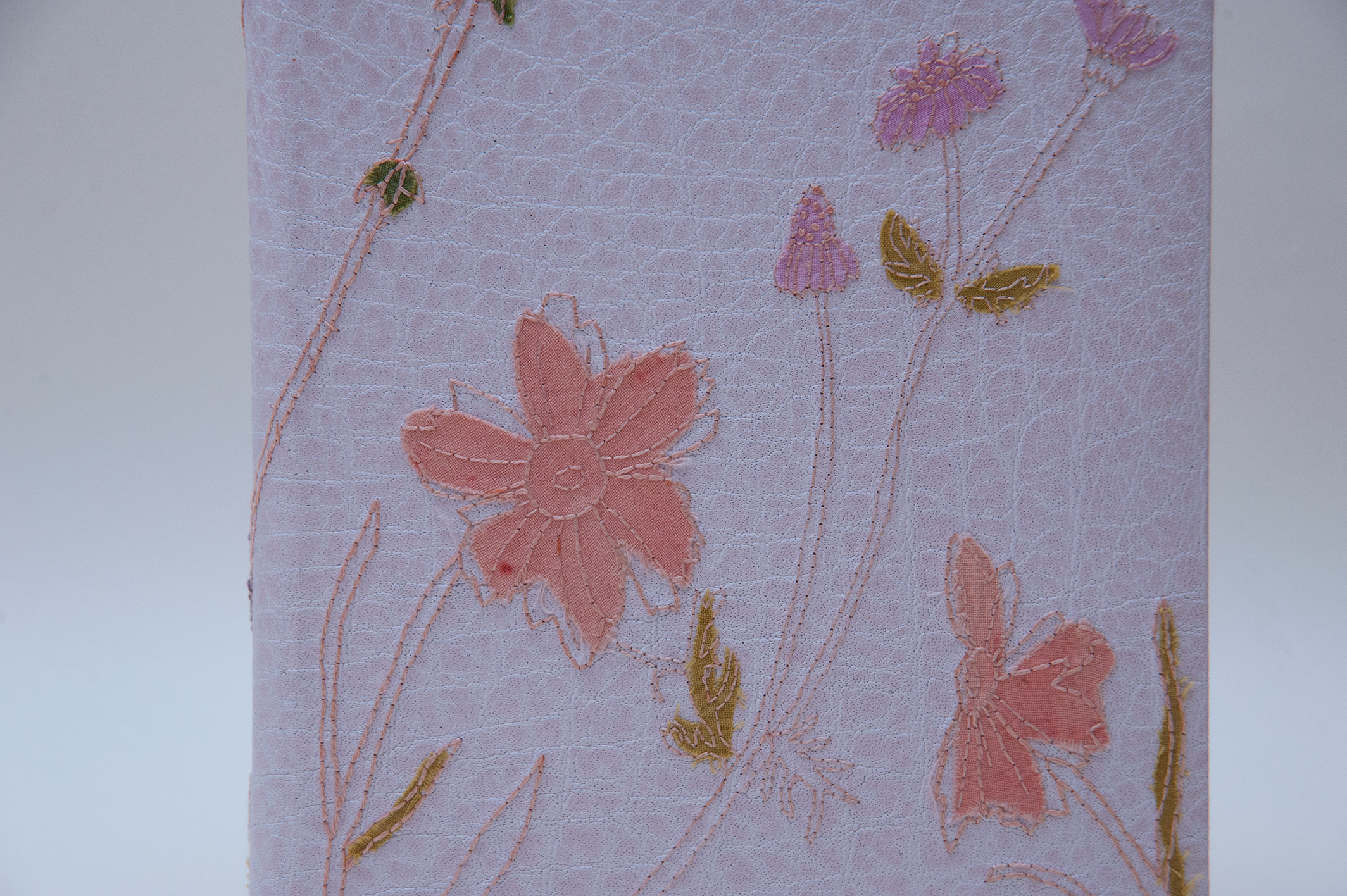

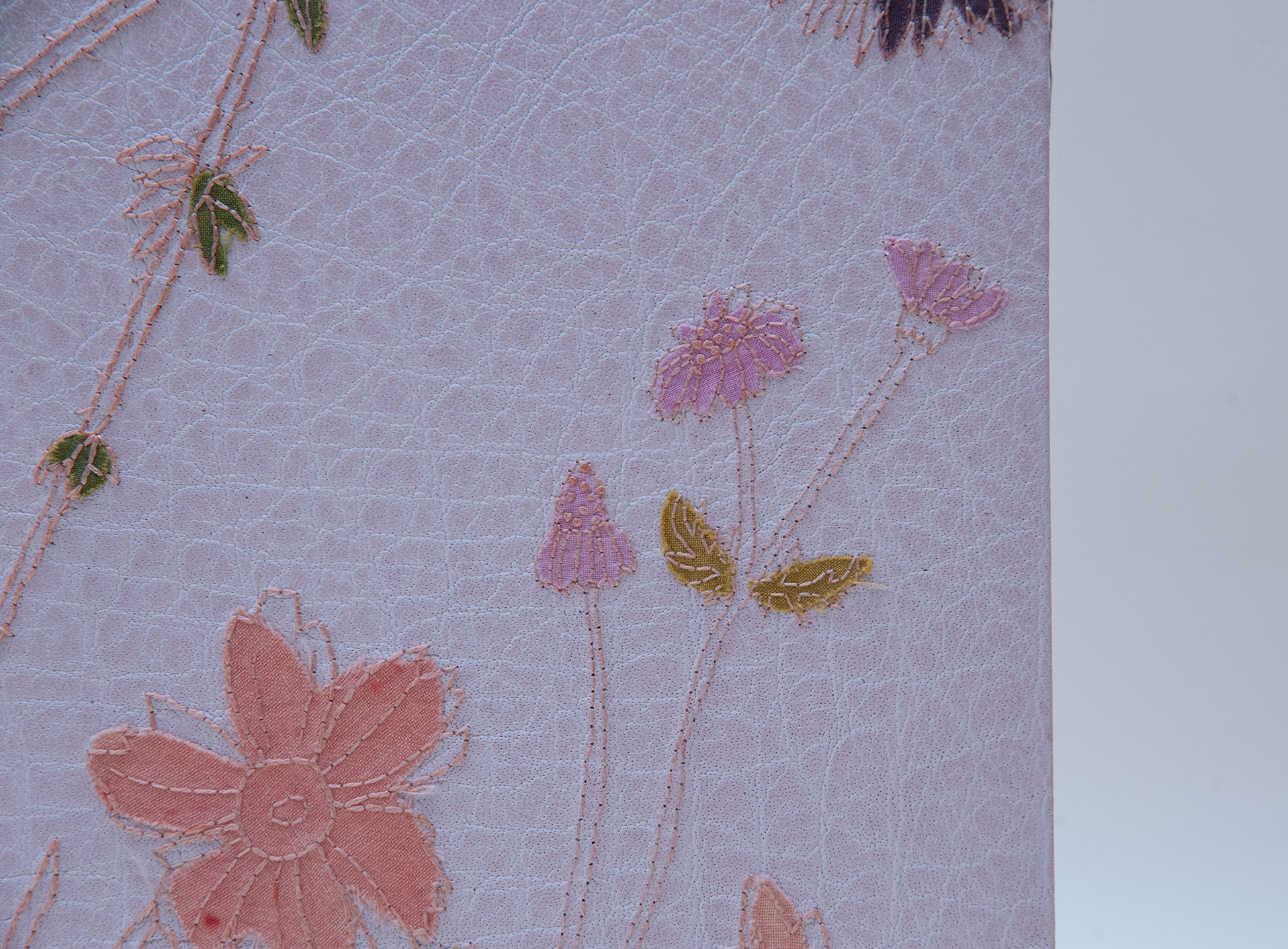
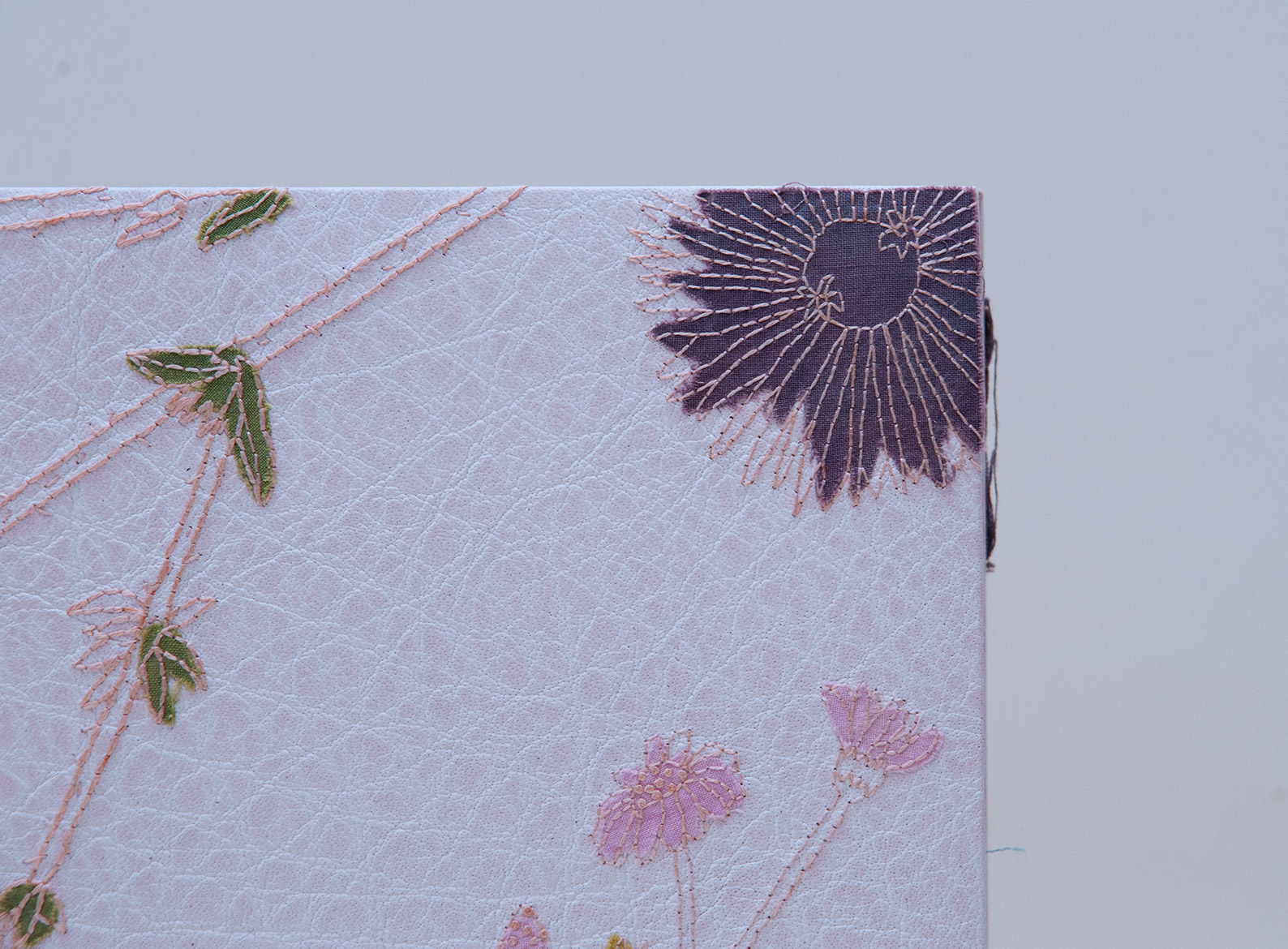
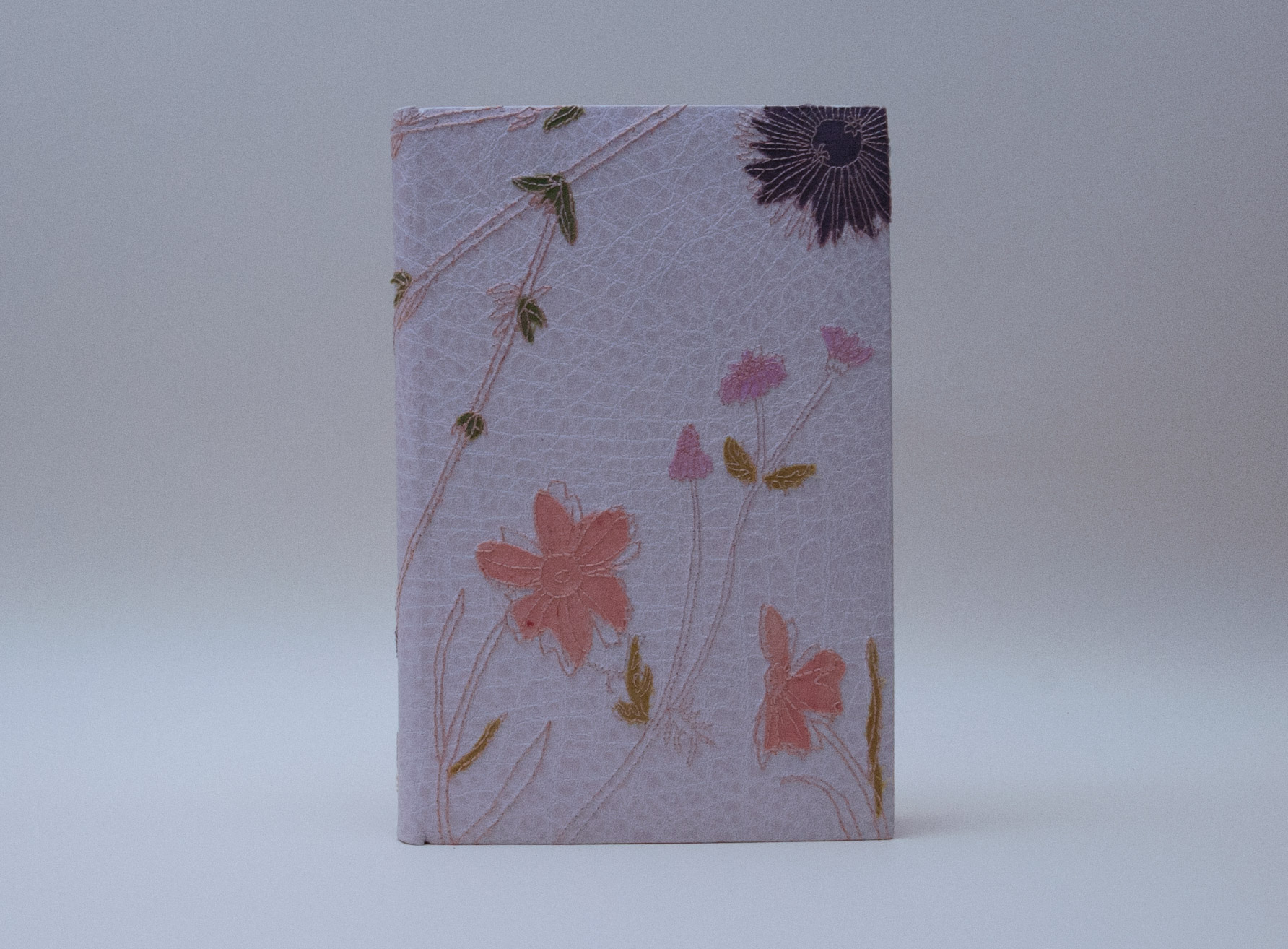
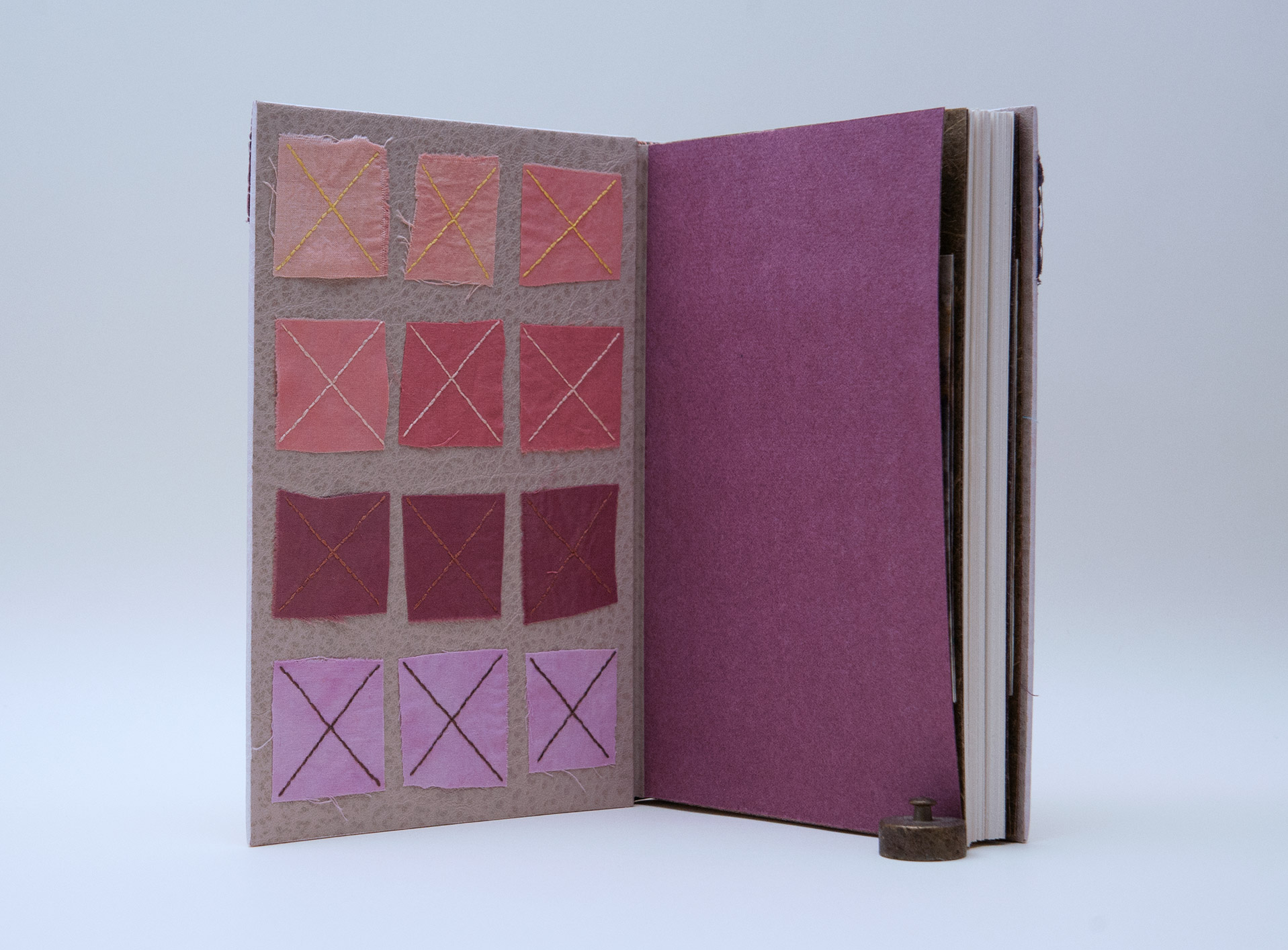
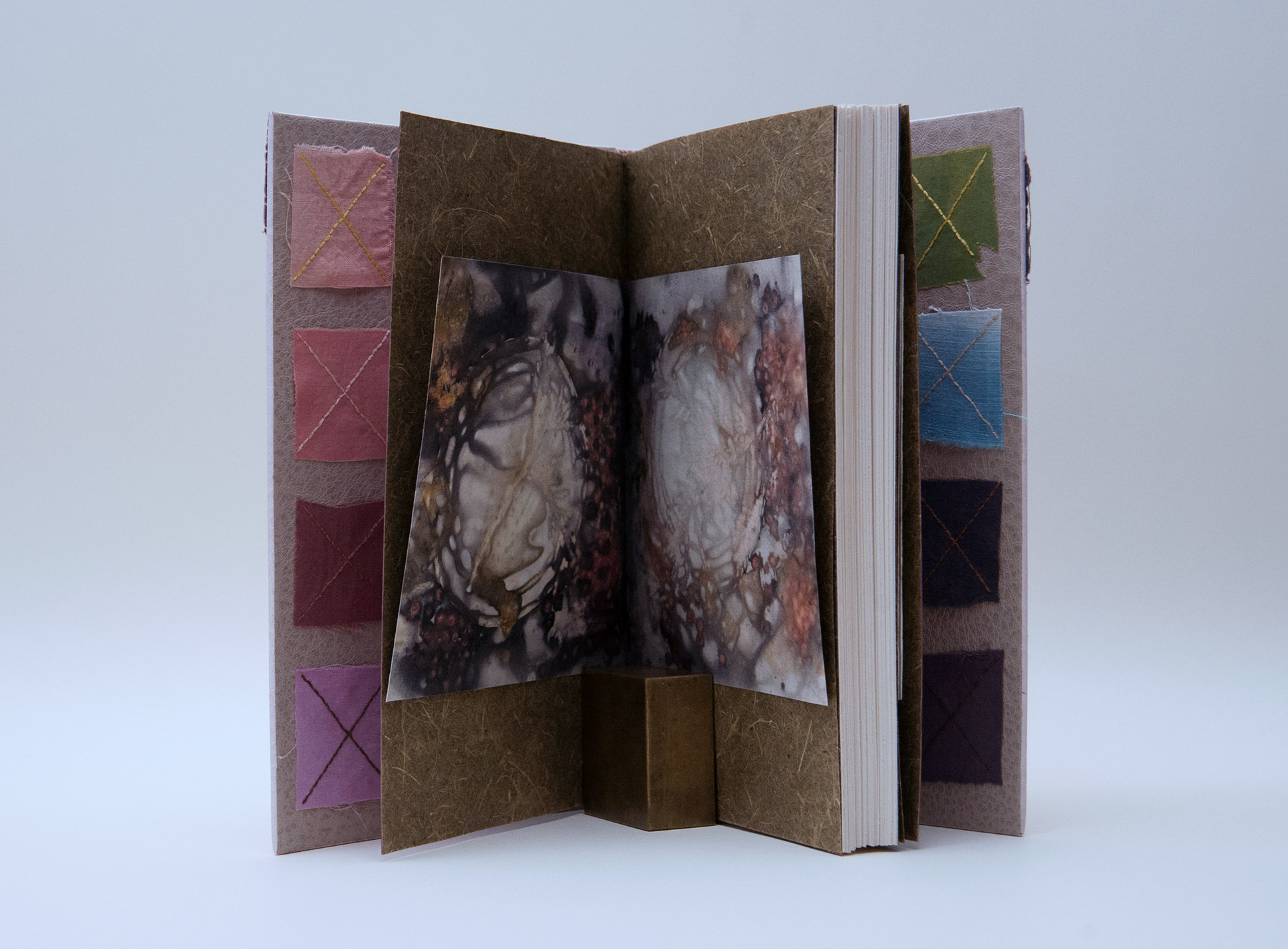
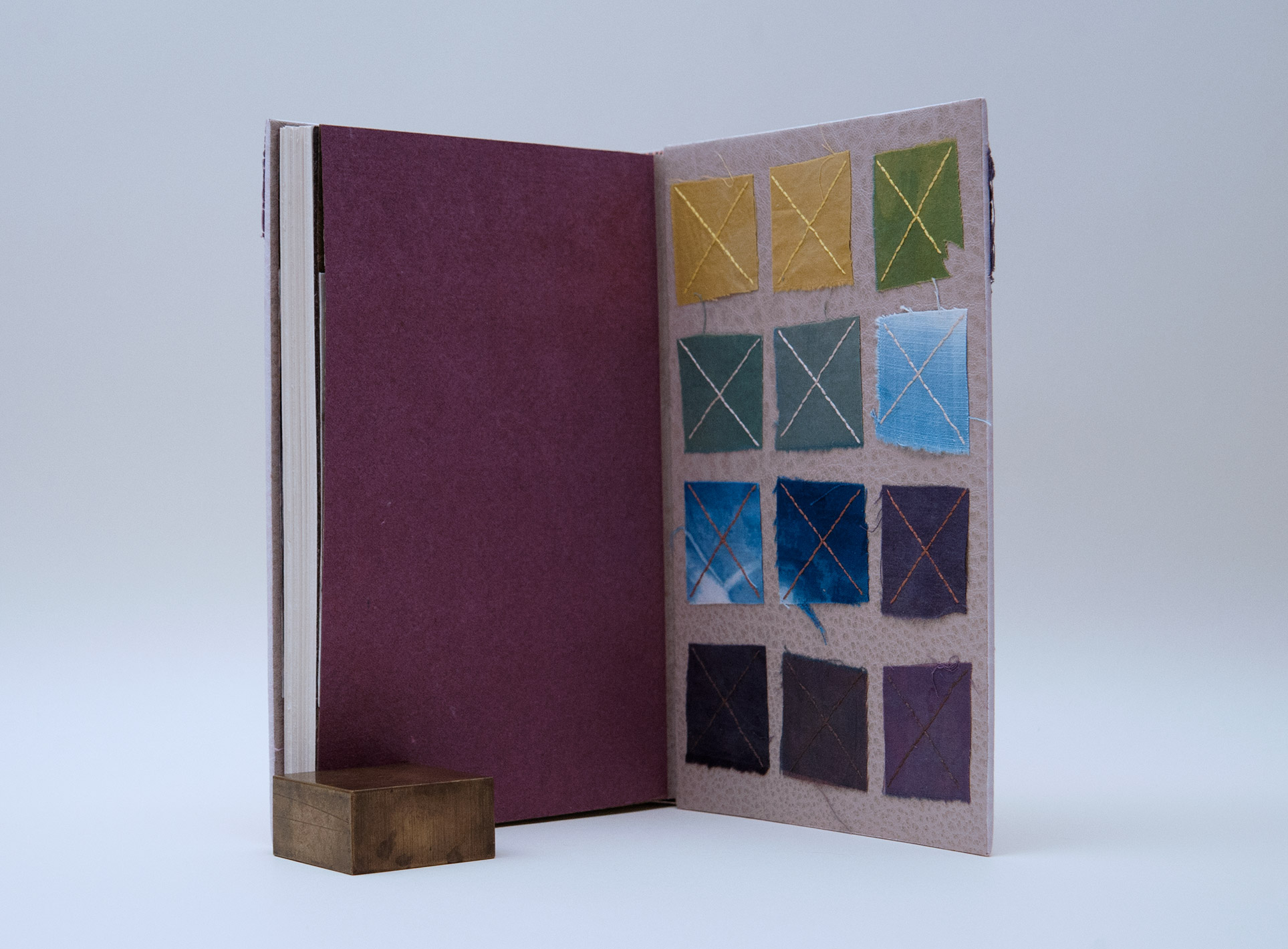
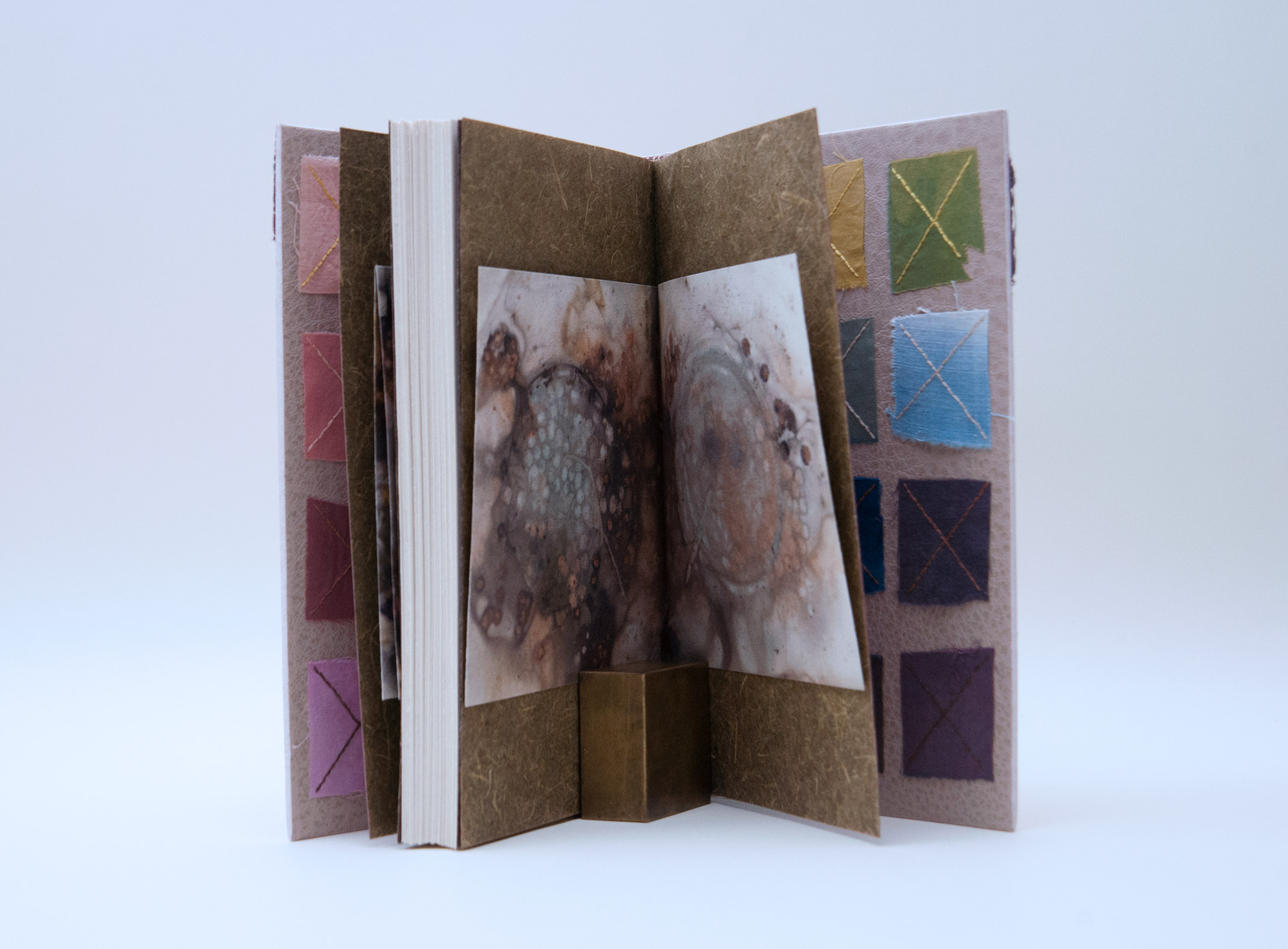
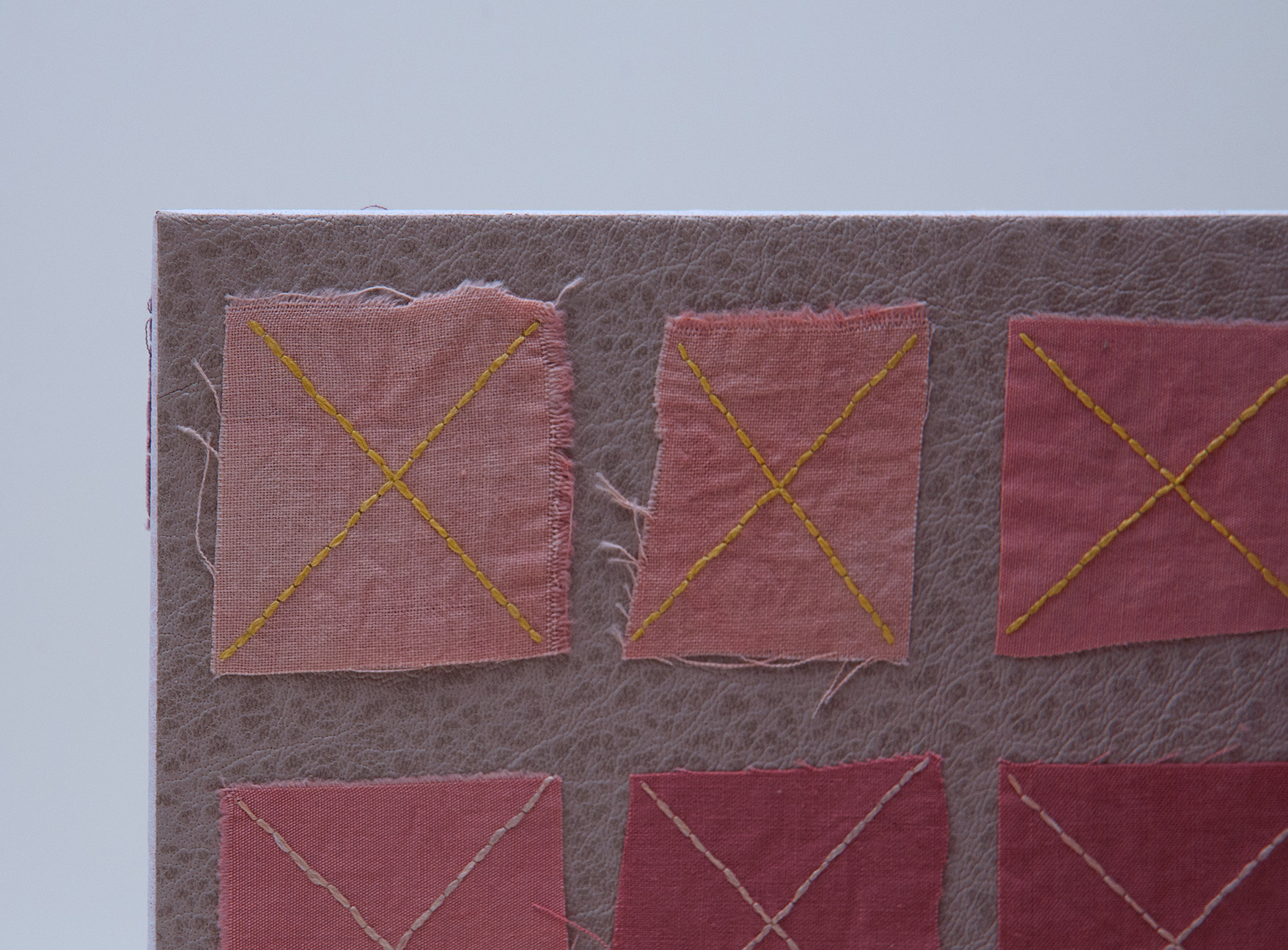
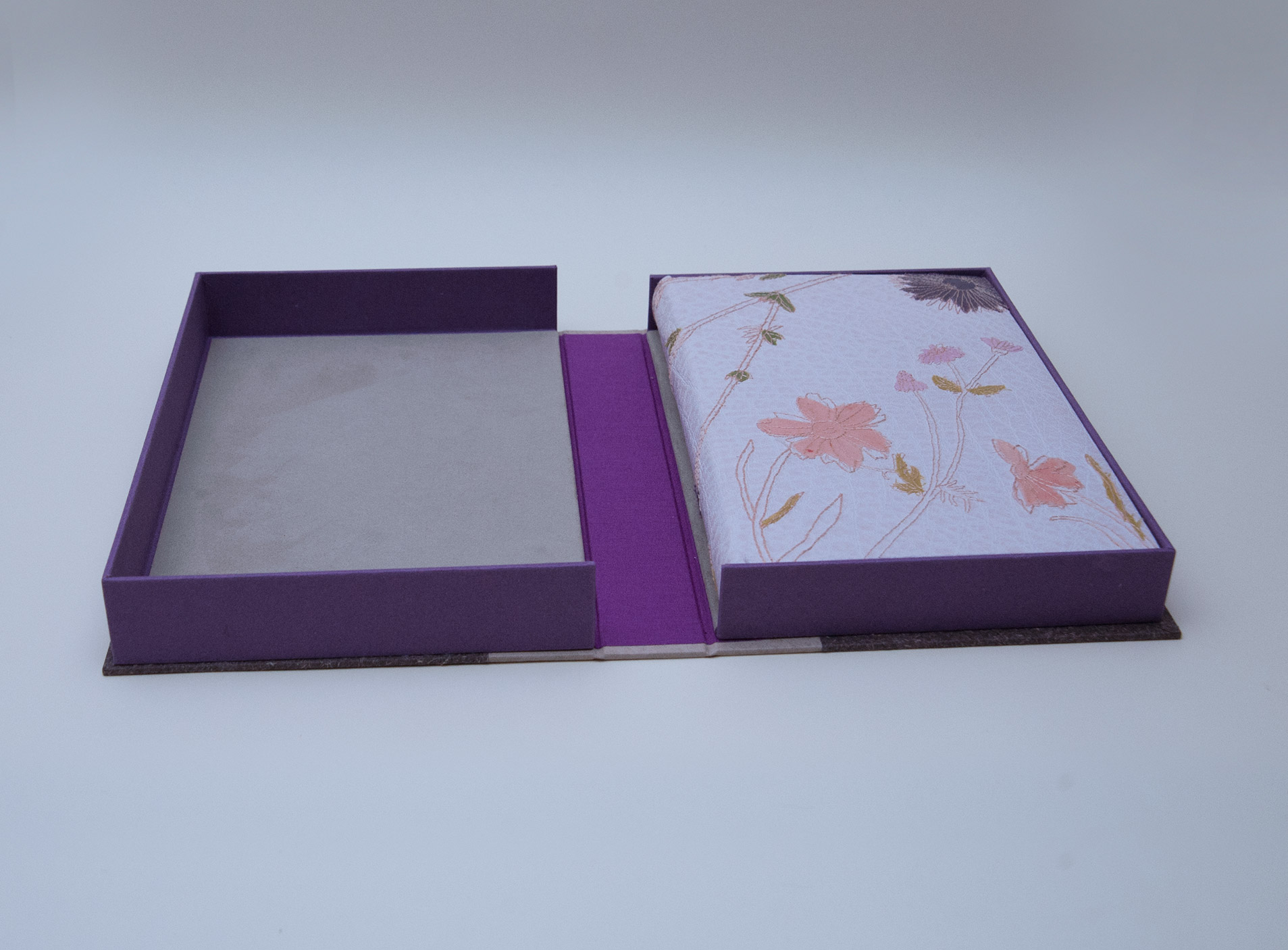
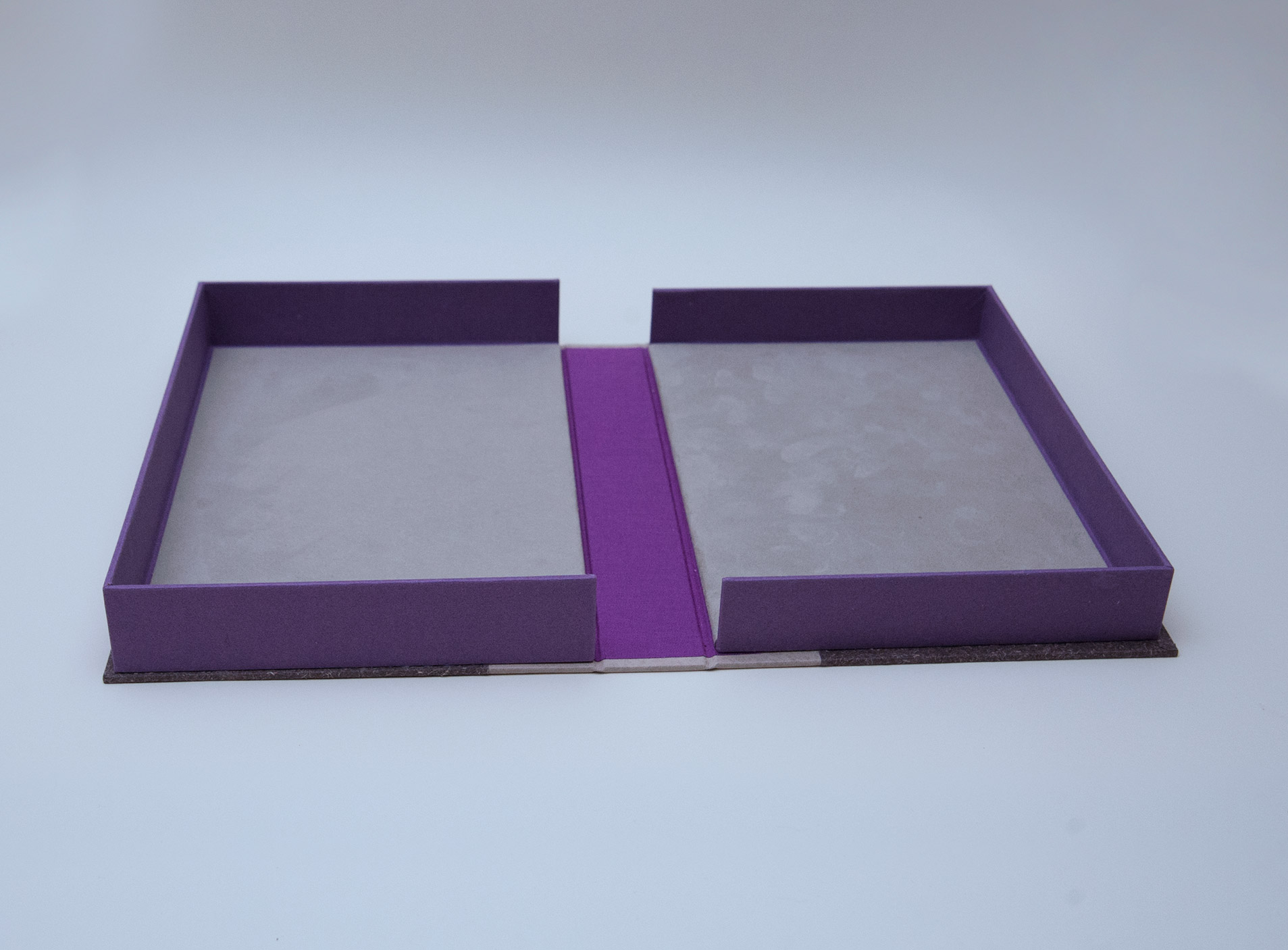

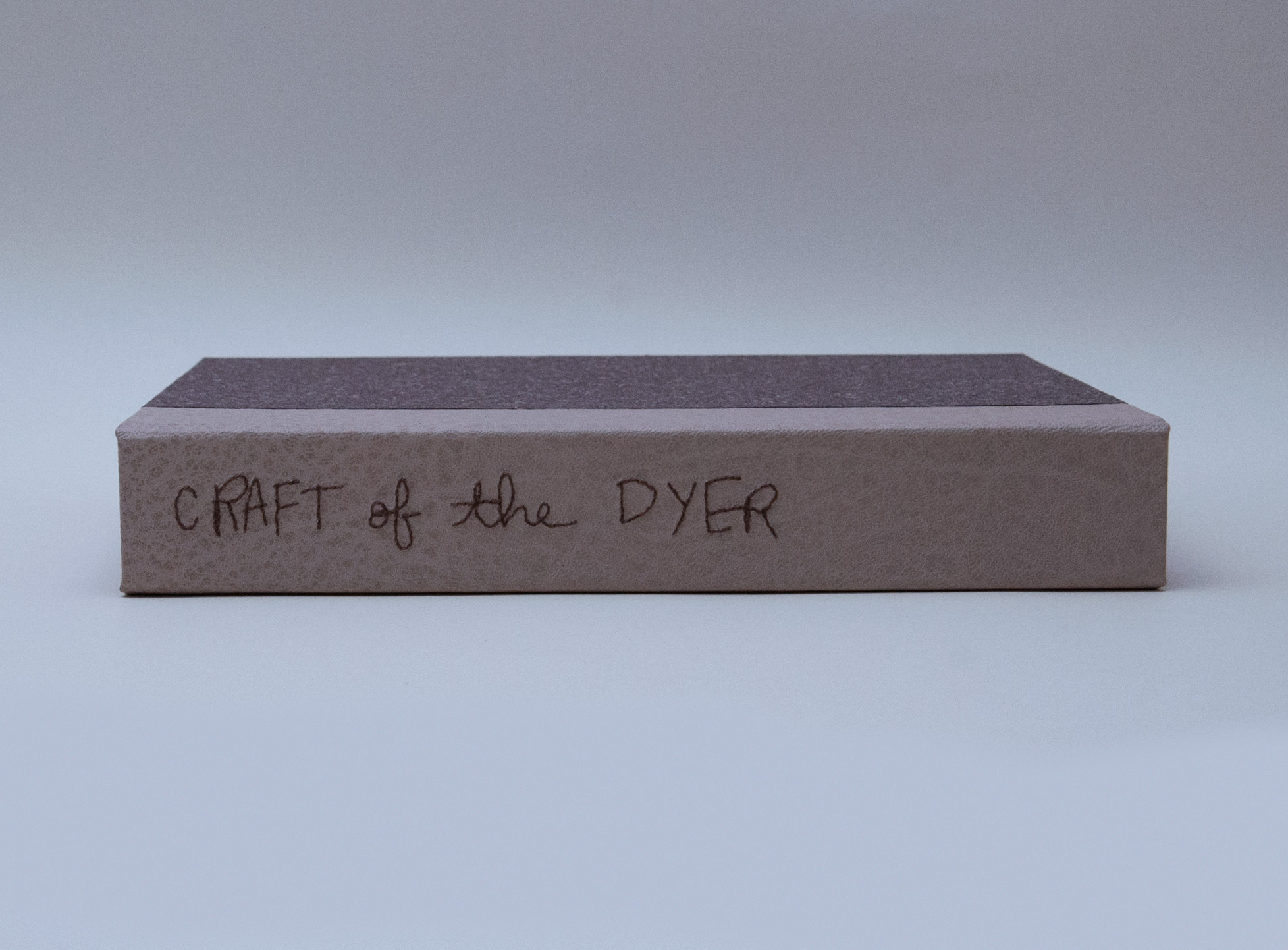
Craft of the Dyer: Colour from Plants and Lichens of the Northeast – by Karen Diadick Casselman
University of Toronto Press, Toronto, 1980French-style fine binding with laced-in boards. Bound in rose buffalo skin with naturally-dyed cotton (from Natalie Stopka) appliquéed with naturally dyed light madder cotton floss. Leather wrapped endbands in olive buffalo skin with wraps of madder and cutch/iron naturally-dyed cotton floss. Light grey buffalo skin doublures with squares of naturally-dyed cotton fabric attached with various colors of naturally-dyed cotton floss. Handmade paper flyleaves in dark orchid. Hook Pottery Indiana Hay endpapers with inserts of eco-printed paper from Velma Bolyard and hooked sheets of Hedgehog purple paper from Hook Pottery Paper.
Binding is housed in a clamshell box covered in light grey buffalo skin and Hedgehog purple paper from Hook Pottery Paper. Leather spine embroidered in cutch/iron naturally-dyed cotton floss in binder’s handwriting. Trays covered in handmade paper in plum and lined with light grey Novasuede.
23.5cm x 15.9cm x 2.7cm – Completed in 2021
Exhibition History
- Exhibited in Designer Bookbinders International Bookbinding Competition: A Gathering of Leaves (2022-2023)
Weston Library, Bodleian Libraries, Oxford, England, UK
Sotheby’s, Central London, England, UK
University of Edinburgh Library, Edinburgh, Scotland, UK
Sotheby’s, Central London, England, UK
University of Edinburgh Library, Edinburgh, Scotland, UK
Artist Statement
Many fiber artists working with natural dyes will create their own dye garden. Craft of the Dyer is well known within these circles as a practical guide for designing a garden rich with plants suitable for dyeing. The floral design on the binding is embroidered with materials that have been naturally-dyed and highlight just a small portion of plants that artists use to extract these dyes.
Inside the binding, swatches of fabric squares are appliquéed to the leather doublures and pay homage to the dye journals many artists keep to document their recipes. All of the papers used for the endpapers and clamshell box are handmade from natural fibers. A surprise insert is eco-printed using organic materials and scrap metal.
The edges of the fabric pieces are left unfinished. This will encourage the fabric to fray and change over time, just like the fugitive qualities of naturally-dyed materials.
